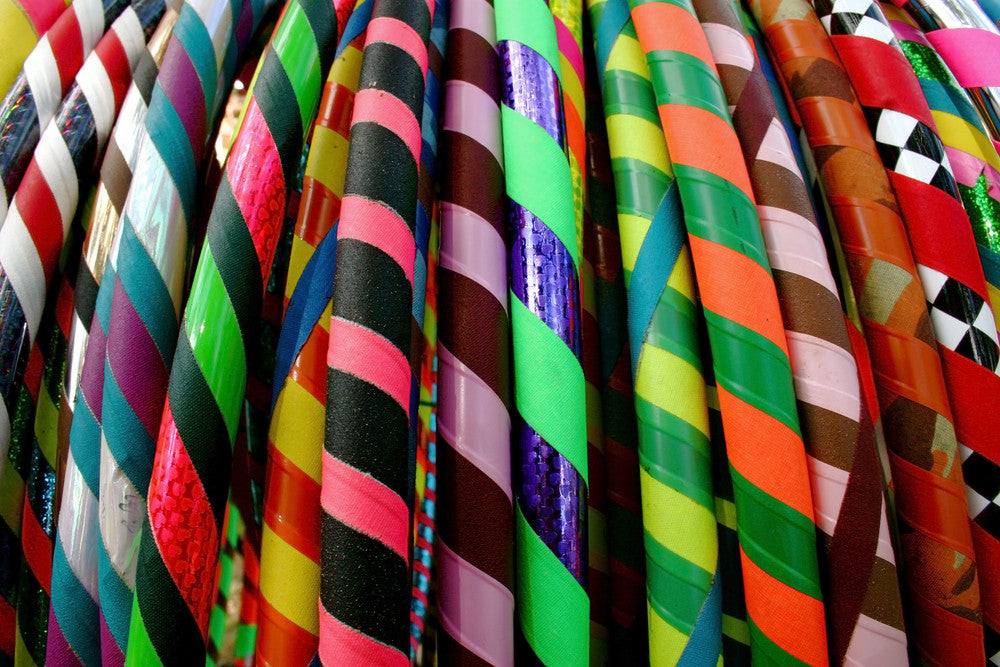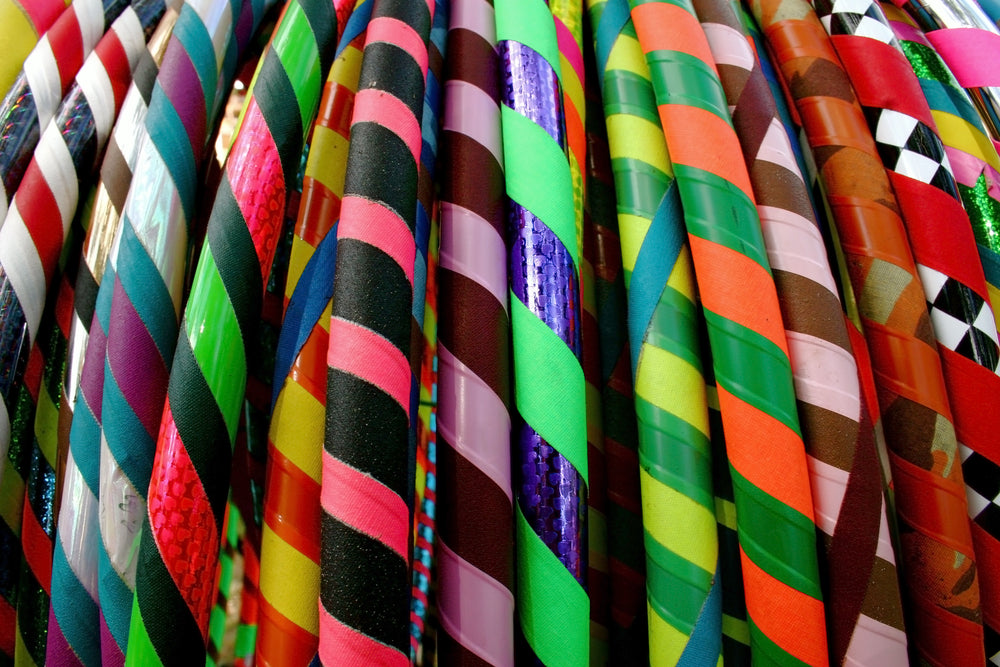
The History of Hula Hoops

The hula hoop--a symbol of youthful exuberance and 1950s innocence--has evolved into a dance trend and a popular fitness tool. What are the origins of this simple plastic hoop that has run the gamut from child’s plaything to aerial dance accessory?
Historical Origins
The exact date and origin of the hula hoop is unknown, but a tradition of playing and exercising with hoops dates back to both Ancient Greece and Egypt. In ancient times, hoops were constructed from dried grapevines or other stiff grasses/plants, such as willow or rattan. Egyptian children played with hoops by rolling them with a stick or whirling them around their waists similar to modern hula hooping. Hoops seem to have been used as well by the Ancient Greeks. There is a vase in the Louvre from 500 BC depicting Ganymede rolling a hoop, and it is possible a version of hula hooping or hoop races were even a part of the Ancient Olympic Games.
Native American Ties
Hoops in dance performance hold strong ties to the Native American community as a form of storytelling that dates back to the 1400s. Hoops symbolize the never-ending circle of life to Native Americans, as they have no beginning or end. Native American hoop dancers use anywhere from one to thirty hoops as props in a dance to represent animals, symbols, and other storytelling components. These dance hoops are typically made of reeds or other natural materials and are smaller than the typical hula hoop.
Dancers use rapid motion and the off-body use of hoops to represent symbols and animals while they construct stories using only their body and these props. Tony White Cloud ushered in modern Native American hoop dance in the 1930s to depict stories of change and transition in the Native American community. Today, the tradition continues in communities across the country, and there is an annual Native American Hoop Dance competition in Phoenix, Arizona.

The Invention of the Modern Hula Hoop
The modern hula hoop first rose to popularity in the late 1950s when it was marketed by the toy company Wham-O. Legend has it that the toy derived its name from British soldiers who had visited the Hawaiian Islands and thought the motion with the hoop looked similar to hula dancing.
Wham-O first got the idea from Australia where children played with hula hoops made of bamboo. The Australian company TolToys began marketing plastic hoops in Australia to meet the high demand for the toy, and it migrated to America where it took off as a toy and fitness phenomenon. To promote the hoop, Wham-O gave out free hoops, demonstrating their use at schools and playgrounds across California. In 1958, the first year of the hoop’s release in America, they sold over 100 million hoops. The original hoop sold for $1.58. And so, the hula hooping craze was born…
The hoop continued to evolve from its polyethylene origins to include beads inside the hoop, which produced noise when used. Hooping became so popular that a National Hula Hooping contest began in 1968 and ran until 1981. Judges evaluated contestants based on their ability to execute a variety of moves, including the Stork, Alley Oop, and Hula Hop.
Hula Hooping Today
Today, hula hooping remains a popular child’s activity, but has grown to be an exercise trend with the rise of circus fitness and activities like aerial hooping.
Since the 1960s, hula hooping, contortionist hoop acts, and aerial hooping have been a part of circuses across the world, rising to greater prominence with Cirque du Soleil in the twenty-first century.
Hula hooping has also become a popular activity at some concerts and the annual Burning Man festival, with artists and organizers passing out hoops to audience members. This has led to a subculture of hoop dancers or “hoopers”. They plan gatherings, known as Hoop Jams, where they meet and hula hoop to music in community spaces. Over the years, hoops have shifted to include glow-in-the-dark and light-up LED options, and many hoopers using glitter, electrical tape, and more to design custom hoops.
Today, many gyms have integrated hoops or hula hoop classes into their fitness options. This has led to a rise in collapsible hula hoops making them easier for transport.
From humble reedy beginnings to an iconic toy of the 1950s to a fitness trend, hula hooping has transcended time to remain one of life’s simple pleasures.


1 comment
When was the Light up hula hoop invented?
kiki
Leave a comment
This site is protected by hCaptcha and the hCaptcha Privacy Policy and Terms of Service apply.